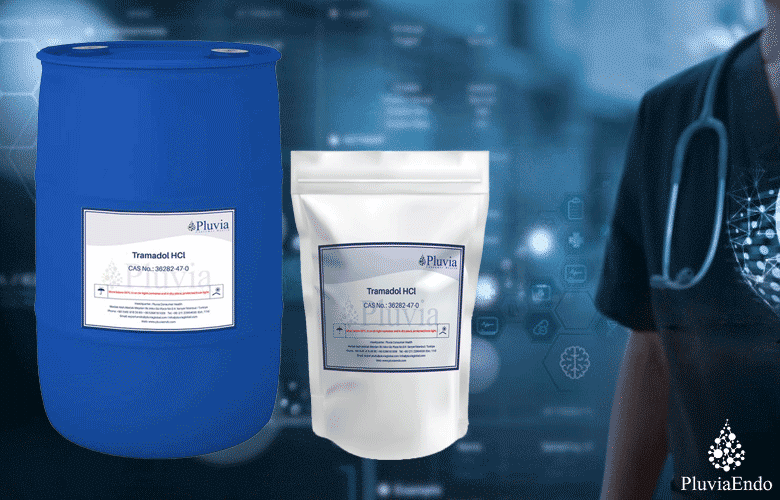Understanding tramadol classification is essential for healthcare providers, pharmacists, and patients alike, as it influences prescribing habits, regulatory compliance, and patient safety. This blog post will explore the importance of tramadol classification and highlight Pluvia Endo Pharmaceutical as a key manufacturer in this space.
Tramadol is a widely used medication for managing moderate to moderately severe pain. Its classification as a weak opioid analgesic has significant implications for its use in contemporary pharmaceutical practices.
Understanding Tramadol Classification
Tramadol is classified primarily as an opioid analgesic, specifically a weak opioid. It acts on the central nervous system (CNS) by binding to mu-opioid receptors while also inhibiting the reuptake of serotonin and norepinephrine. This dual mechanism of action contributes to its analgesic effects, making it a valuable option in pain management.
In June 2014, tramadol was reclassified as a Schedule 3 controlled substance in the UK and as a Schedule IV controlled substance in the United States. This change was largely due to increasing concerns about misuse and dependency associated with tramadol use. The reclassification necessitated stricter prescribing guidelines, including specific documentation requirements and limits on the duration of supply.
Implications for Prescribing Practices
The classification of tramadol has profound implications for prescribing practices. Healthcare providers must now adhere to more stringent regulations when prescribing tramadol, which include specifying the dose, and total quantity, and ensuring that prescriptions are valid for only 28 days. These requirements aim to mitigate risks associated with misuse while ensuring that patients continue to receive effective pain relief.
Moreover, the reclassification has prompted healthcare professionals to reassess their prescribing habits. With tramadol being viewed as a controlled substance, providers may be more cautious in prescribing it compared to non-controlled alternatives. This shift can lead to a broader discussion about alternative pain management strategies and the potential need for additional training on safe prescribing practices.
Patient Safety and Awareness
The significance of tramadol classification extends beyond regulatory compliance; it also plays a crucial role in patient safety. Patients prescribed tramadol must be made aware of its potential side effects, including the risk of dependence and withdrawal symptoms upon discontinuation. The requirement for careful monitoring and gradual tapering of doses after prolonged use is essential to prevent withdrawal symptoms.
Furthermore, patients should be educated about possible interactions with other medications that can increase serotonin levels, leading to conditions such as serotonin syndrome. This awareness is vital in ensuring that patients understand their treatment options and can make informed decisions about their health.
Pluvia Endo Pharmaceutical: A Key Manufacturer
Pluvia Endo Pharmaceutical is a notable manufacturer of Tramadol API, contributing significantly to its availability in the market. As a producer of generic medications, Pluvia Endo plays an essential role in providing cost-effective options for patients requiring pain management solutions.
The company adheres to stringent quality control measures and regulatory standards to ensure that its tramadol products meet safety and efficacy requirements. By focusing on high-quality manufacturing processes, Pluvia Endo helps maintain the integrity of tramadol as an effective analgesic while complying with evolving regulations surrounding controlled substances.
Additionally, Pluvia Endo’s commitment to research and development enables them to explore new formulations and delivery methods for tramadol. This focus has the potential to enhance its therapeutic benefits while minimizing associated risks.
The Future of Tramadol Classification
As the landscape of pain management continues to evolve, so too will the classification and regulation of tramadol. Ongoing research into its efficacy, safety profile, and potential alternatives will likely influence future regulatory decisions. Healthcare providers must stay informed about these changes to ensure they provide the best care possible.
Moreover, as public awareness regarding opioid misuse grows, there may be increased scrutiny on all opioid medications, including tramadol. This could lead to further adjustments in how tramadol is classified or prescribed in various regions.
Conclusion
The significance of tramadol classification in contemporary pharmaceutical practices cannot be overstated. Understanding its implications for prescribing practices, patient safety, and regulatory compliance is essential for healthcare professionals and patients alike.
As a key manufacturer in this field, Pluvia Endo Pharmaceutical ensures high-quality tramadol products remain available. They also play a vital role in adhering to necessary regulations. They also adhere to necessary regulations.
In navigating the complexities surrounding tramadol classification, stakeholders must prioritize patient education and safety. They must also remain adaptable to changes within the pharmaceutical landscape. By doing so, we can continue to provide effective pain management solutions that meet the needs of patients. At the same time, we will address concerns related to misuse and dependency.







